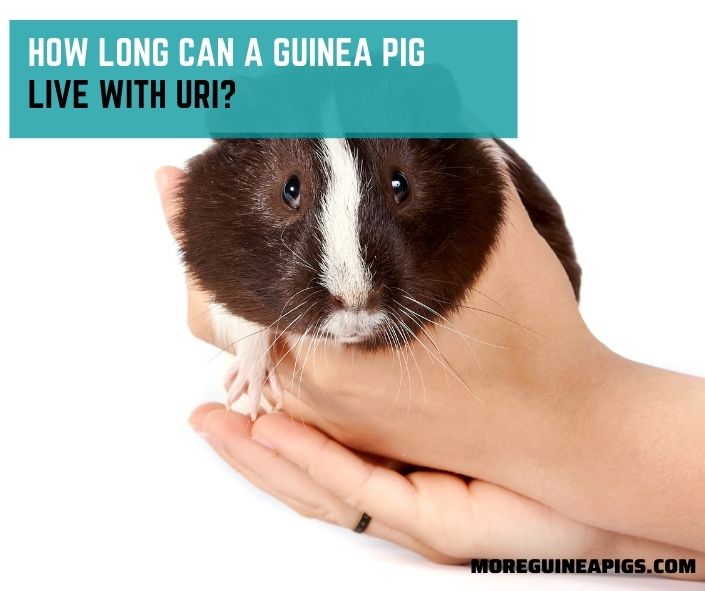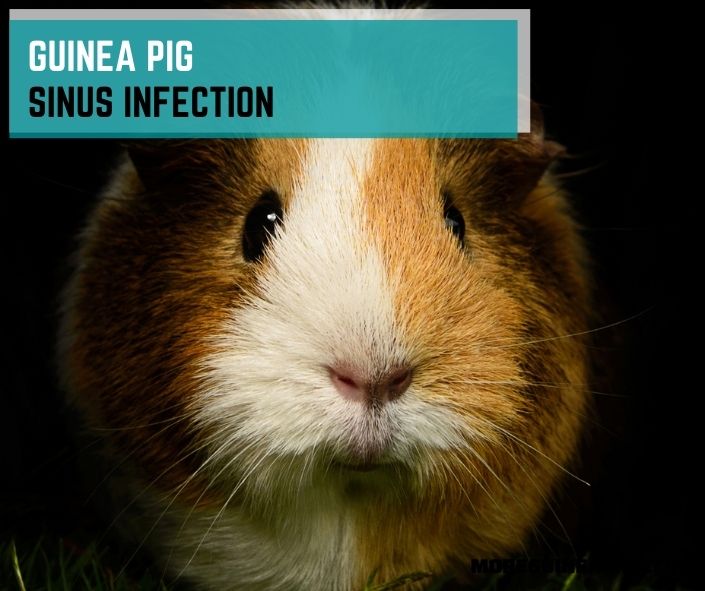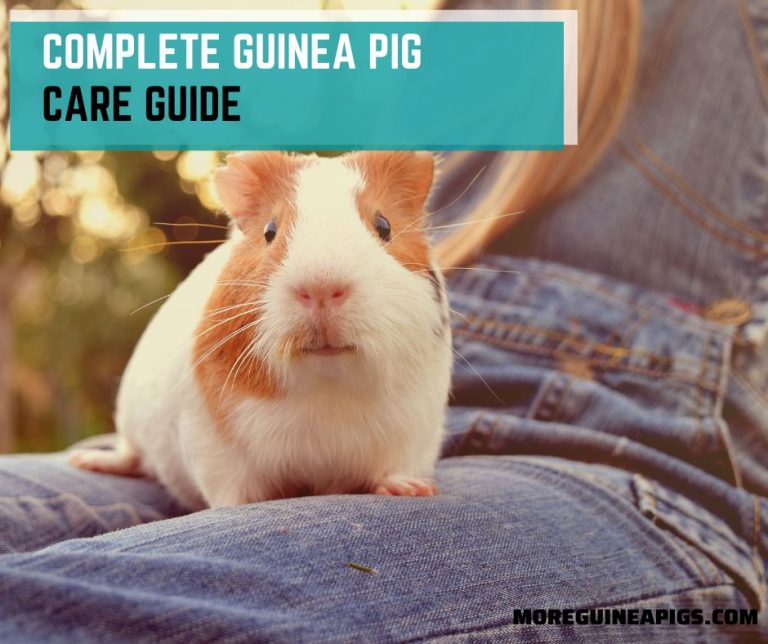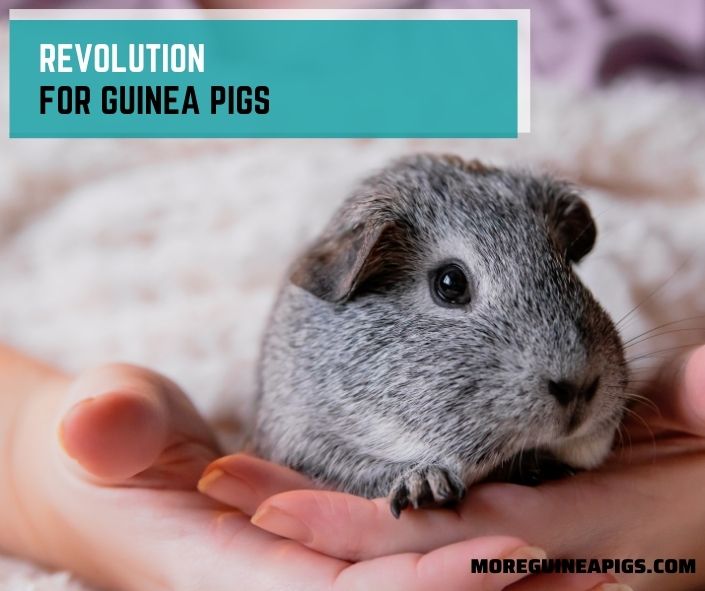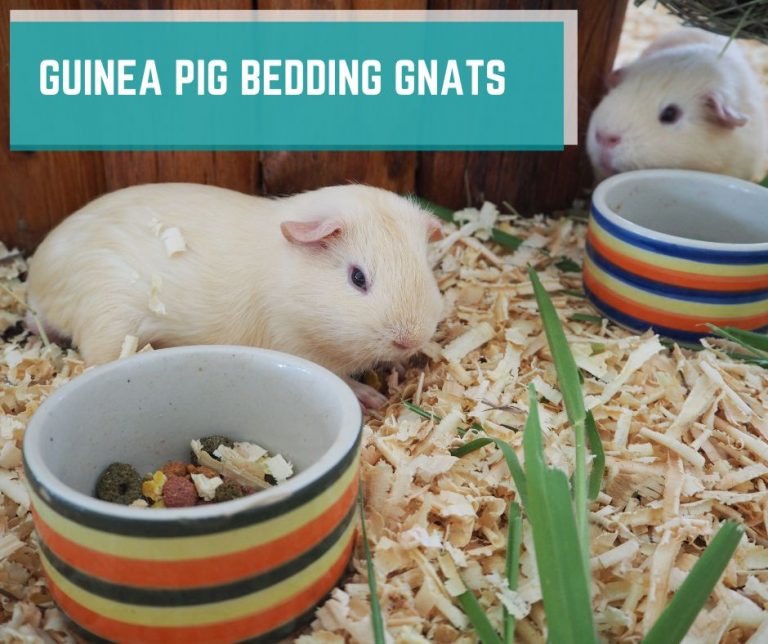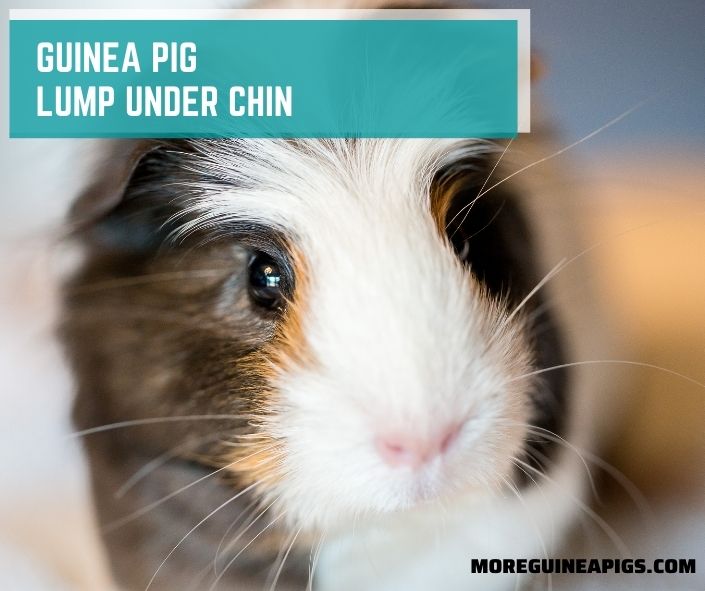How Long Can a Guinea Pig Live With URI?
Guinea pigs are susceptible to various diseases and infections including Upper respiratory infections. With respiratory and lung infections, guinea pigs cannot survive long, thus how long can a guinea pig live with URI?
Guinea pigs are known for hiding sickness and infection symptoms. It is critical for pet owners to be aware of any little signs of illness. For that, owners seek veterinarians and experts to know about common illnesses of guinea pigs and their symptoms.
This article will teach readers about a common problem of guinea pigs that is Upper respiratory infection. The signs and symptoms of URI will also be discussed, as well as the behavior of infected guinea pigs.
So, thoroughly read the post to early diagnose and treat the infection.
How Long Can Your Guinea Pig Live With URI?
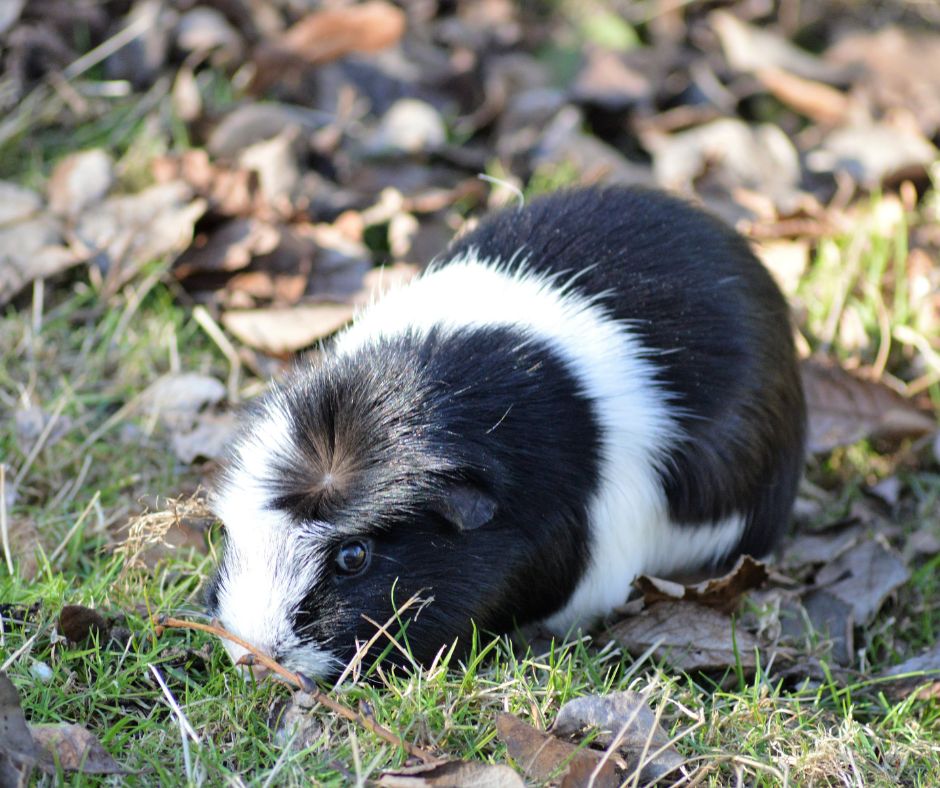
When a guinea pig has an upper respiratory infection, it spreads to the lower respiratory tract and eventually kills it. After contracting the infection, a guinea pig may die within a few hours. The infection would not progress this quickly. But, signs may not show in the initial stages of infection, so it can seem this rapid to some owners
However, it depends on the immune system of guinea pigs and some guinea pigs die after 48 hours of infection.
Guinea pigs have an inclination to hide symptoms of disease and abnormalities. Because they are prey to a variety of predators, including birds, felines, and canines.
The longevity of a guinea pig’s life is determined by the severity of the infection. Therefore, it is important for owners to notice any unusual signs from the piggies.
Signs and Symptoms of URI
Depending on the infectious agent, the signs and symptoms differ. Bordetella or streptococcus bacteria can cause URI. When bacteria enter the respiratory tract, they multiply and form colonies, resulting in signs and symptoms.
The common signs of URI include lethargy, mucous discharge from the nose and mouth, loss of appetite, dehydration, weight loss, coughing, sneezing, and frequent breathing.
Sneezing, loss of appetite and open mouth breathing are early signs. Once the infection spreads, mucous discharge starts from the mouth and nose, sometimes bloody discharge.
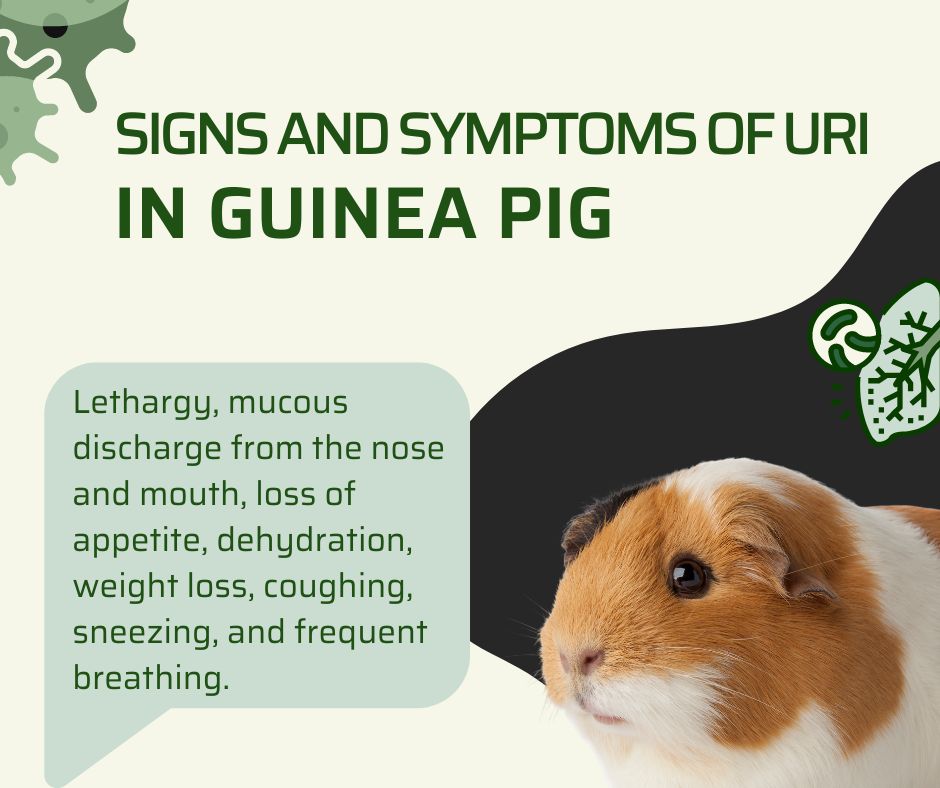
Consequences of Untreated Upper Respiratory Infection
If the URI is left untreated, it can be fatal for a guinea pig. The bacteria proliferate and cause respiratory organ damage. As a result of the weak immune system, the pet is more susceptible to secondary infections.
Because the bacteria invade the respiratory system, they disrupt the cilia, which trap dust particles and toxic agents and prevent them from entering the lungs.
As a result, if these cilia are damaged, polluted particles can easily enter the lungs, causing further complications.
Coughing and sneezing cause lung structures including alveoli, air sacs, and capillaries to collapse. This leads to internal bleeding and the discharge of blood from the mouth and nose.
So, once internal bleeding develops, treating the infection is practically impossible, and the guinea pig dies.
Can Guinea Pigs Get URIs From Each Other?
Yes, URI infections are contagious and can transfer to other cage mates as well. Infectious microorganisms are clearly present in nasal discharge and droplets after sneezing and coughing.
The pathogen can transmit and infect any healthy guinea pig who comes into contact with or touches it.
To avoid the spread of infection, diseased guinea pigs must be separated from healthy guinea pigs. Except for viral and bacterial infections like adenoviral and streptococcal infections, not all URIs are contagious.
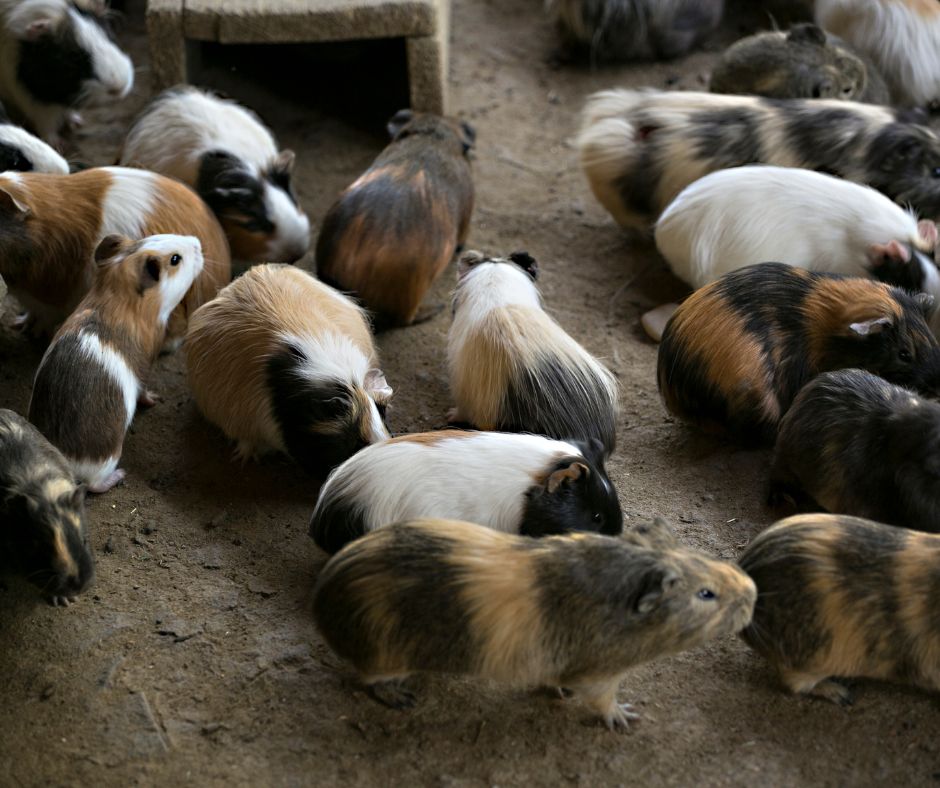
Guinea Pigs URI Treatment
Yes, it is possible to treat URI at home as well. It is the ideal method because a change of location and habitat can induce stress in guinea pigs, which can lead to further complications.
If you can convince a veterinarian to administer medication at home, your pet’s chances of recovery improve, and you can better care for him.
Treatment and medication depend on the type of pathogen that caused the infection. According to that, you can offer antibiotics and other medicines to your pet.
The recovery can be delayed due to the kind of bedding material used in the cage. So, use bedding material that has no irritating and pungent smell.
Another most important thing in treating URI is the diet of guinea pigs. Vitamin C should be included in a guinea pig’s diet since it strengthens the immune system and prevents secondary infections.
Ascertain that you’ve provided comfy bedding and that the cage is kept at the proper temperature.
What does Your Vet May do with Guinea Pigs?
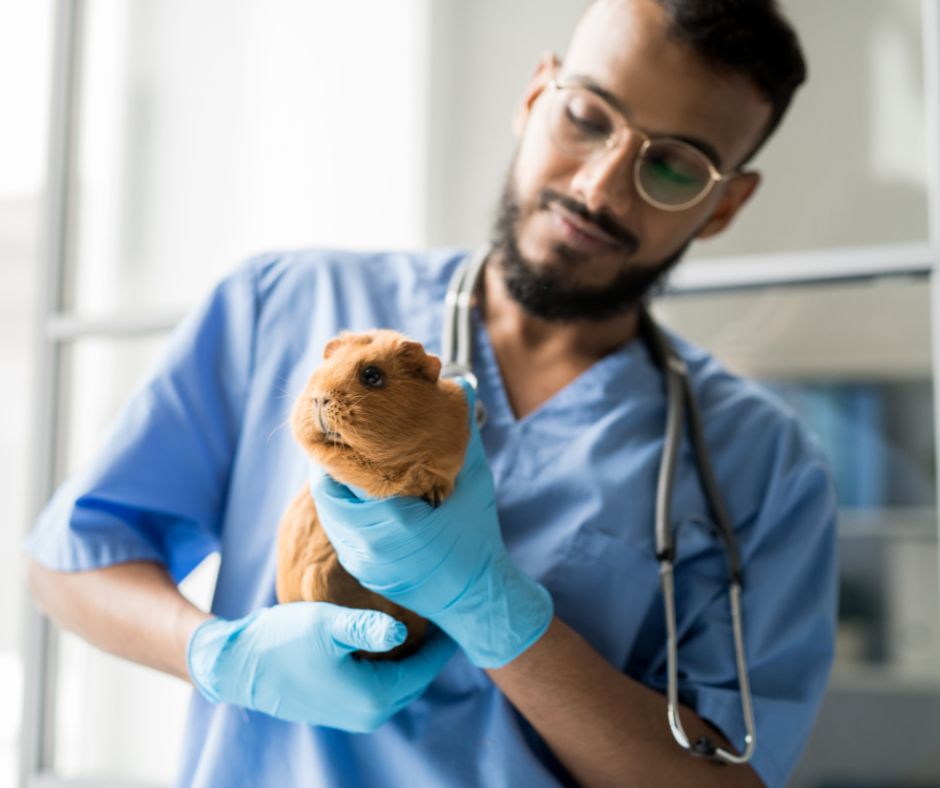
A vet can diagnose the URI by observing the signs and symptoms. He or she may perform blood tests or take a nasopharyngeal swab to confirm the diagnosis if the signs and symptoms are unclear.
A veterinarian will prescribe medication once the diagnosis has been confirmed.
A veterinarian will prescribe antibiotics based on the type of infective pathogen. Doxycycline, gentamicin, sulfonamides, and chloramphenicol are antibiotics that are effective against URI.
Their effectiveness, however, may vary depending on the location and species.
How Long Should It Take for URI To Improve?
A guinea pig can improve and recover in 5 days if you recognize the signs and start therapy right once. It may take weeks to recover if you started treatment after the infection has fully spread.
Antibiotics and other treatments must be administered properly to avoid further complications. Within the first three days of therapy, giving a guinea pig a timely prescribed dose, keeping it warm, and preventing the flow of cold air can enhance the conditions.
How To Prevent Upper Respiratory Infection?
The easiest method to avoid upper respiratory infections is to stay away from the things that cause them. There are five common factors that can cause URI which include stress, a non-healthy diet, unhygienic conditions, change in temperature, and irritative bedding material.
To avoid upper respiratory infections, maintain a clean environment with a warmer temperature. When the temperature drops, URIs become more complicated, so keep your guinea pig in a warm, clean cage at all times.
Providing a nutritious diet with food supplements is another strategy to prevent URI. Guinea pigs require vitamins to stay healthy and disease-free. As a result, adding vitamins, probiotics, and antioxidants to their diet can help them avoid infections.
Vitakraft VitaSmart Complete Nutrition Guinea Pig Food
In Conclusion
Guinea pigs’ immune systems are vulnerable to a variety of illnesses, including upper respiratory infections. The most important thing is to keep a guinea pig in a healthy and comfortable environment to avoid infection.
Once it becomes infected, it is critical to recognize the symptoms and visit a veterinarian to begin treatment. Because once the infection has gone to the alveoli and air sacs, the vet will have a tough time controlling it and it may result in death.
So, take the necessary precautions to avoid such infections and begin treatment as soon as your pet becomes infected.
